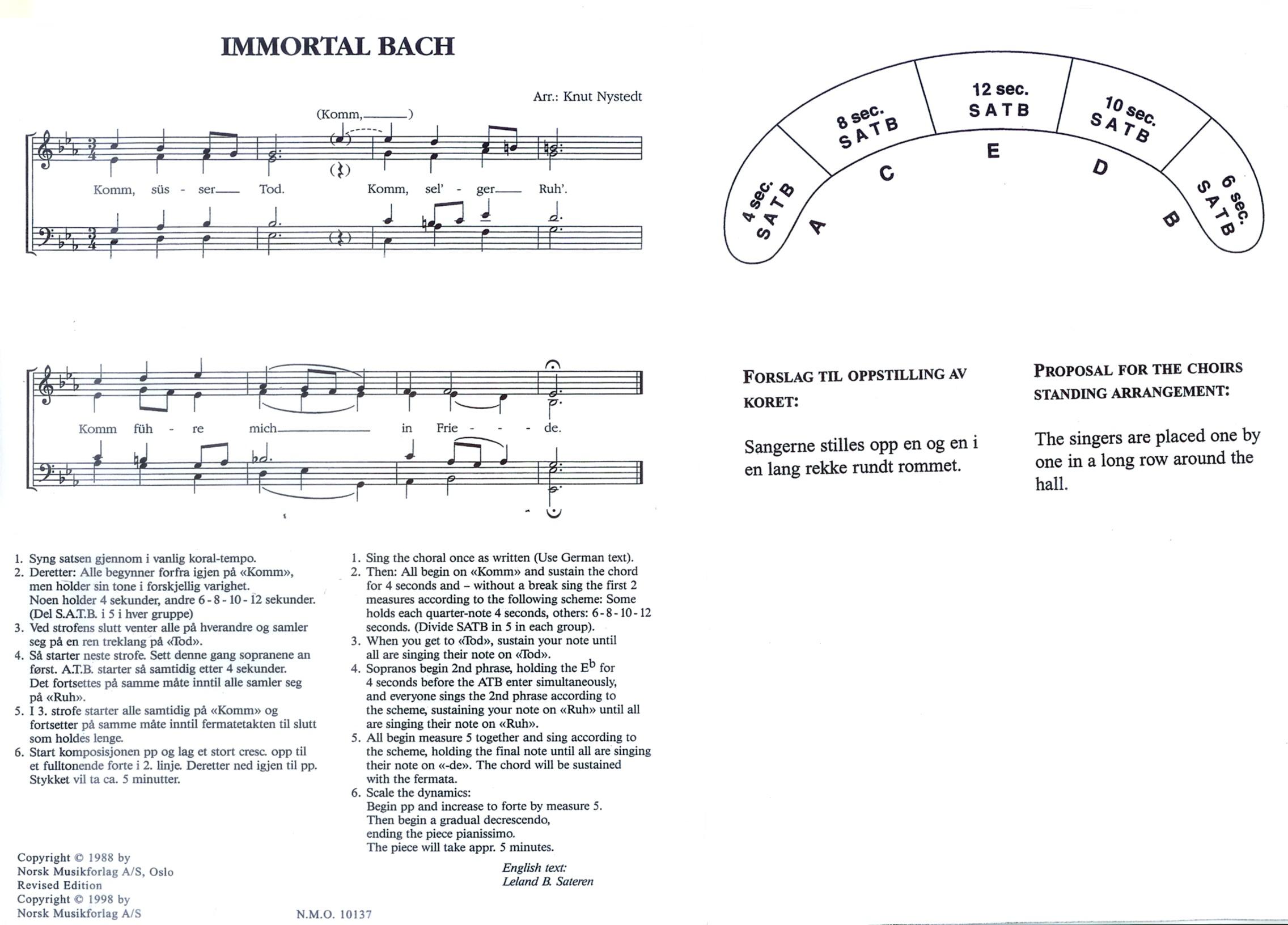What if you could keep Bach's timeless music from decomposing?
Knut Nystedt's 1988 work, Immortal Bach, attempts precisely that. Surprise! The harmonization parades itself as a classic isometric chorale setting by the composer as of cantata finale movements, but the original is a solo voice and continuo setting included in Georg Christian Schemelli's Gesangbuch of 1736.
 |
| Original. Not kidding. |
Not so! There's more!
 The instructions for the chorale set it apart, and make music theory lovers like myself shiver with joy. In performance, all vocalists sing the first chord for 4 seconds, then progress at different rates - some continue at 4 seconds per quarter notes, but others for 6, 8, 10, or 12 seconds. Once the first group reaches the cadential chord, they wait until everyone else resolves to it, and release together. The same procedure applies to the rest of the phrases - things get very interesting sonorically with the eighth-note passing tones. Depending on the recording, the chorale may be sung before (Nystedt) or after (which I prefer for better contrast).
The instructions for the chorale set it apart, and make music theory lovers like myself shiver with joy. In performance, all vocalists sing the first chord for 4 seconds, then progress at different rates - some continue at 4 seconds per quarter notes, but others for 6, 8, 10, or 12 seconds. Once the first group reaches the cadential chord, they wait until everyone else resolves to it, and release together. The same procedure applies to the rest of the phrases - things get very interesting sonorically with the eighth-note passing tones. Depending on the recording, the chorale may be sung before (Nystedt) or after (which I prefer for better contrast). Come, sweet death;
Come, blessed rest;
Come, lead me in peace!
Just when it seems like nothing can get better than 18th-century counterpoint, someone adds a spatula and kaleidoscopes all of the harmonic possibilities so we can hear them.
I wonder what text-painting the composer has in mind?
Recording: https://www.youtube.com/watch?v=pftYqg6iyvQ


No comments:
Post a Comment